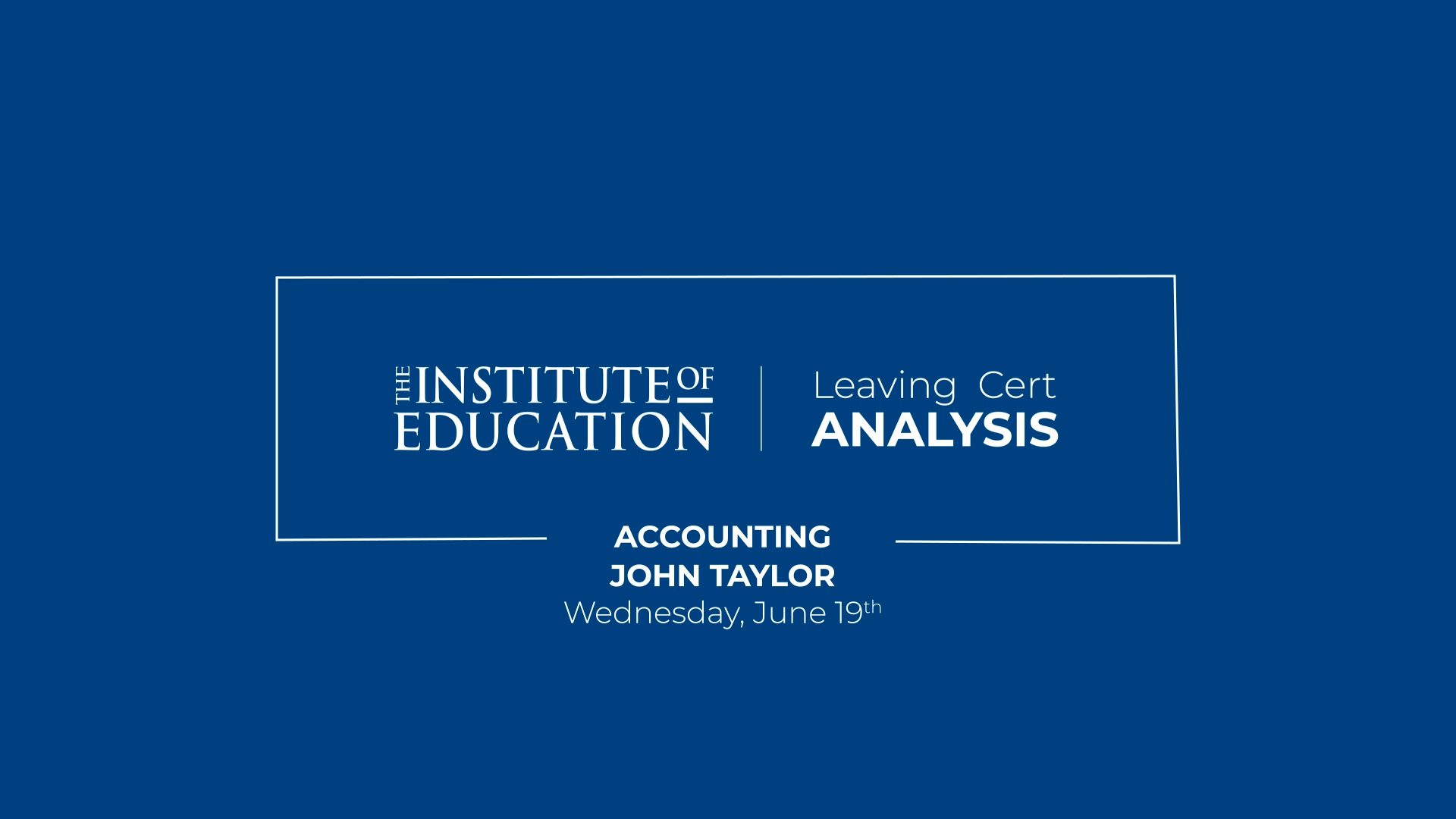Reaction to 2024 Leaving Certificate Accounting (Higher Level) by John Taylor, Accounting teacher at The Institute of Education.
- A paper whose fairness was rooted in its consistency with previous years
- A good test of an applied skillset honed with practice
Accounting is about consistency: the application of a honed skillset within the given time. In many ways it is a very practical subject and so a fair paper is one that lets the student jump right into the work without distraction or confusion. This was a fair paper. Everything has appeared in some form before and patterns from previous years remained. Anyone who had applied themselves to practicing the past papers and kept an eye on the clock will be relieved by the exam’s conclusion.
In Section 1, students had a choice of Q1 on the preparation of Final Accounts or the option of completing two 60-mark questions. As guaranteed again this year, students who opted for Q1 were given two options and this year these related to the Limited Company and the Manufacturing Company. Both options were very straightforward and reflected similar questions asked in the past. The trial balance in both contained nothing unusual except for net discount in Q1A which related to discount allowed rather than the usual discount received so hopefully all students noted that. There were the standard nine adjustments in both questions The adjustments would all have been familiar to students and included damaged and destroyed stock, depreciation on delivery vans, goods on SOR; Patents W/O; Suspense; VAT; Revaluation; Rent prepaid, bank account amendments and provisions for amounts due and transfers. All of which are well-established in the past papers with only the particular numbers differentiating them from year-to-year. The only tricky parts requiring students to be careful were the inclusion of a scrap value in the depreciation of the delivery vans in Q1A and the patents written off commencing in 2021 as the former is not always asked and requires a set order of operations.
The three optional 60-mark questions consisted of Published accounts; Farm accounts and Depreciation which were widely anticipated. These questions did not contain any major surprises and were not so long as to disproportionally consume precious exam time, so students attempting this option would have been pleased. The depreciation question included installation charges which might have thrown some students but has been asked before in different questions so, yet again, diligent preparation would pay off. The theory element of the farm accounts was very nice asking students to consider energy savings in their financial analysis of the proposal to install solar panels.
In Section 2, students were required to complete two of the three questions, which consisted of Interpretation of accounts which had been guaranteed, Cash Flow Statements and Correction of Errors. Again, students may have been expecting most of these topics and so would have been very pleased as they could launch straight into their answers. The questions themselves were very nice and did not contain anything that students would have seen and practiced in previous years questions. The ratios in Question 5 were very straightforward and Q5(b) concerned a typical analysis as per the bank manager while part (c) concerned ordinary and preference shares. This was a very nice part (c) but it would be important that students realised it only carried 10 marks and would not require as detailed an answer as it would had it been asked in part (b). Again, with timing such a vital concern, it was important that students calibrated their responses rather than reciting an overlong response from memory.
Q6, Cash Flow Statements was anticipated and was a routine question. Again, the theory element was fairly straightforward relating to the benefits of cash flow preparation and the differences between profit and cash. Q7 on Correction of Errors was a typical question and contained nothing that students would not have come across before in previous Correction of Errors questions. Error (iii) relating to “advertising due” and “rent” prepaid was the only tricky moment here but should have been familiar to students as it has been a feature of previous papers.
In Section 3 on Management/Cost accounting, students are required to attempt one question from Costing and Budgeting. Q8 on Flexible budgets and stock valuation was very clear and fit neatly within the allotted time. A few tricky elements asked students to calculate breakeven point and margin of safety. While all students would have known how to do this, they may have been surprised to see it asked in that particular question. This required some mental agility to navigate over topics, but this wasn’t an enigma to be cracked or deciphered: if you had the skill, it was clear where to use it. The stock valuation was straightforward, although being asked to name a second method of stock valuation at the end might have tested some students. Q9 was a cash and production budgeting combined question which was much anticipated. It was a very forthright question on the same lines as questions asked previously. The theory question used the phrase “variance analysis” which might have thrown some students as that particular phrase might be more abstract than normally used for a very practical activity.
Overall, I think this was a very manageable and fair paper rooted in the conventions of the Accounting course. Students who had practiced their Accounting and past examination questions well over the last two years will have found themselves well-suited to the questions, relieved and a little tired after racing the clock.

